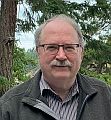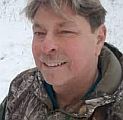OVERWHELMED COMMUNITIES ARE LOSING SIGHT OF THE GOAL: “A message of hope is paramount in these times of droughts, forest fires, floods AND housing affordability as system resiliency is being stressed,” says Kim Stephens, Partnership for Water Sustainability in British Columbia

“Sustainable service delivery should have been the engine for integration across disciplines, departments, and sectors. But that is not how it turned out. ASSET MANAGEMENT overshadows or dominates SUSTAINABLE SERVICE DELIVERY in everyday thinking. The two ideas have in practice become disconnected. It is no surprise that the asset management community has lost its way. We are observing this across sectors. Communities and local governments are being overwhelmed by the issues of the day, losing sight of the goal, and getting lost in the details,” stated Kim Stephens.










